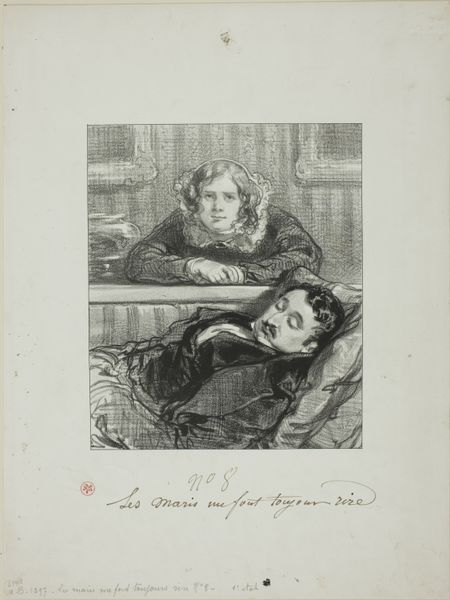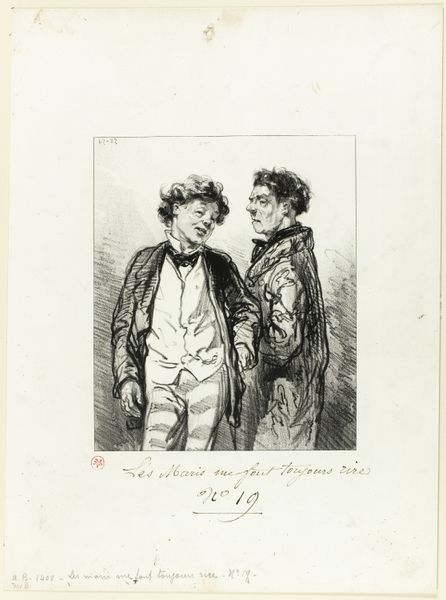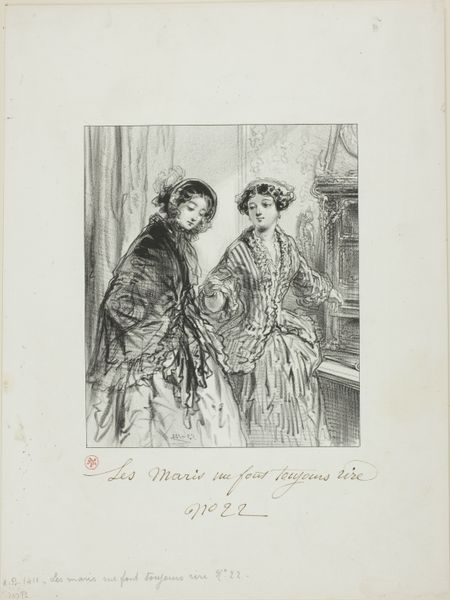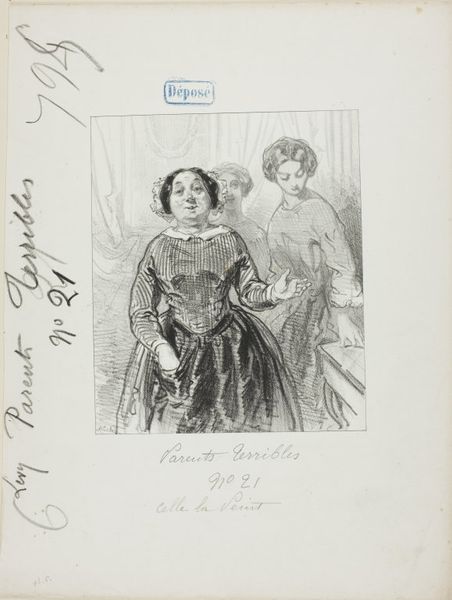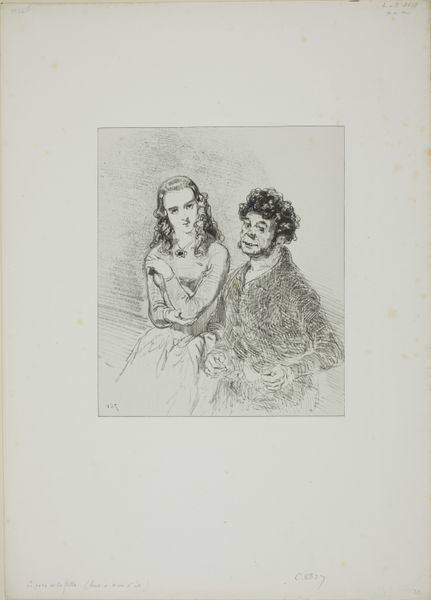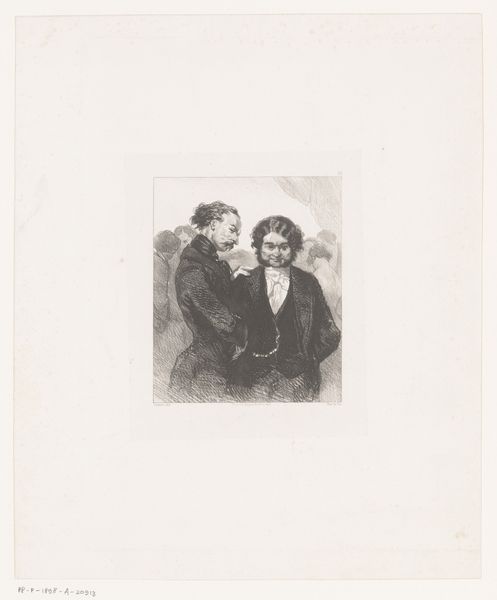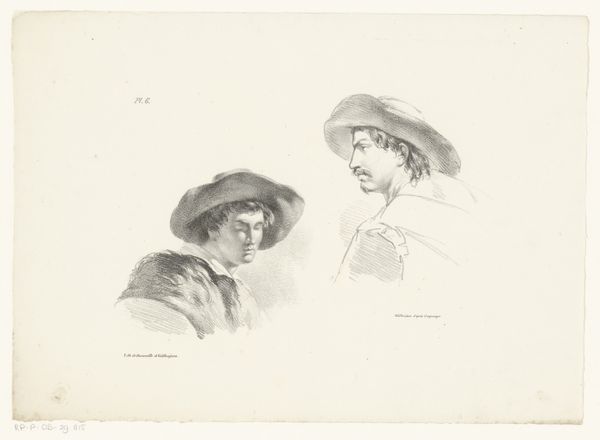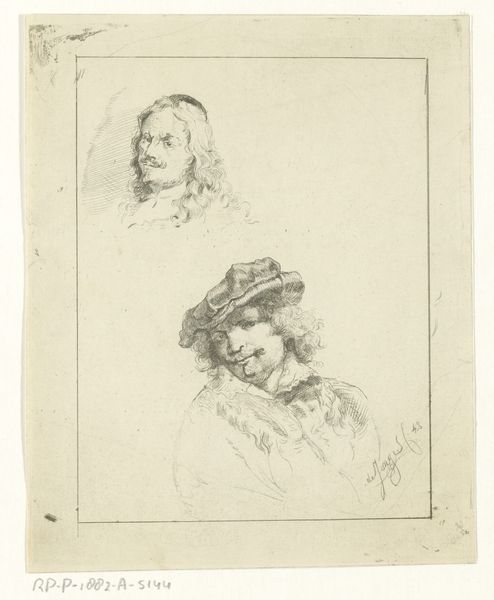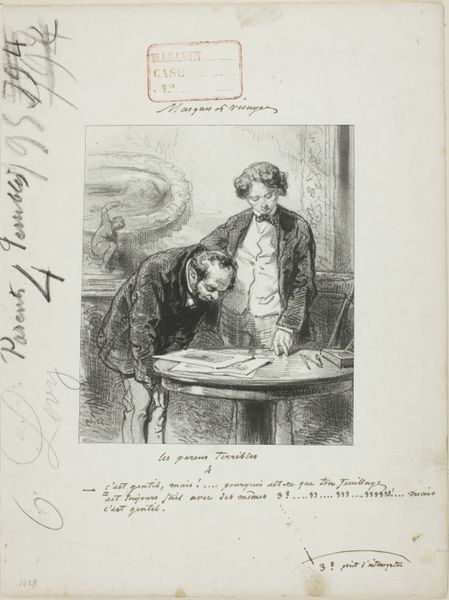
Les-Parents-Terribles series: By jove; the princess'-papboard calves 1853
0:00
0:00
Dimensions: 193 × 160 mm (image); 358 × 270 mm (sheet)
Copyright: Public Domain
Curator: Welcome! We're standing before an intriguing print by Paul Gavarni, dating back to 1853. Part of his series, "Les-Parents-Terribles," it's rendered in lithograph, pencil, and ink on paper. The Art Institute of Chicago is fortunate to have this drawing within their collection. Editor: It immediately strikes me as slightly unsettling. The subjects seem trapped in a rigid composition, despite the loose lines of the drawing itself. I find myself wondering about the implications of the piece's title in connection with their portrayal. Curator: It's essential to place Gavarni within the broader history of 19th-century Parisian imagery. He was known for capturing aspects of city life—especially commentary on class distinctions. These depictions are intended as both observations and societal critiques. Editor: Definitely. And even the casual details contribute so much! A single ink pot is seen in front of them, maybe hinting at creative production as another form of domestic labor performed in a middle-class milieu that has just the thinnest veneer of respectability. This piece has an atmosphere of social commentary with a dark undercurrent. Curator: Absolutely. His work found a wide audience in newspapers, impacting popular taste. Here we see the rigid social constraints imposed upon the family in this era. There are these "terrible parents" trying, but possibly failing, to project their image as respectable members of Parisian society, according to the dominant conservative standard of their time. Editor: The title seems ironic—it begs the question: terrible according to whose standards? Are we looking at a representation of societal judgment or a critique thereof? The lack of dynamism really works here, almost highlighting the social paralysis that affected many families who tried and yet often failed to rise to those heights of social achievement that seemed to always elude them. Curator: I think you are onto something here. I hope viewers consider this in light of how power is reproduced within societal structures. These social mechanisms keep pushing down even those who have managed to rise from humble backgrounds, leaving a sense of hollowness for failing to attain acceptance from the highbrows of Parisian society. Editor: Absolutely, there's a certain disquieting quietness that invites contemporary viewers to really confront those structures. A perfect example of the intimate relationships that shape history.
Comments
No comments
Be the first to comment and join the conversation on the ultimate creative platform.


